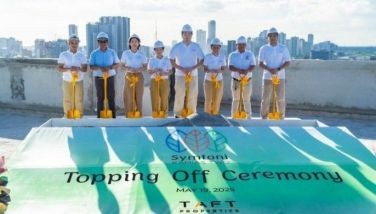Railroaded

Sen. Grace Poe gave notice another Senate hearing on the state of the commuter rails will be held. We hope DOTC Secretary Joseph Emilio Abaya materializes at that hearing.
From where Abaya sits, everything is fine with the commuter rails system. The poor commuters who must endure the rail service see entirely the opposite as they struggle for a ride day in and day out.
Instead of telling us exactly what he intends to do with the mess that is our rail service, Abaya resorted to calling critics names. He insults our people’s intelligence every time he opens his mouth.
Moreover, he lies. He lies repeatedly and compulsively especially on the matter of the decrepit MRT.
I list below some questions I hope will be asked during the Senate hearing.
After the maintenance contract with Sumitomo was unceremoniously junked by then DOTC Secretary Mar Roxas, Abaya signed short-term maintenance contracts with obviously unqualified service providers. Although the service providers change corporate names and consortia at brief intervals, there is a common shareholder in all of them: a minor politician from Pangasinan who is a member of the LP.
How true is it that this shareholder was (or is) a major campaign contributor to Mar Roxas’ previous electoral campaigns (and possibly his current one)?
Government paid the maintenance providers P57 million each month. The amount is supposed to include procurement of spare parts (even as they used the spare parts stockpile left behind by Sumitomo and did not replenish the stockpile). Yet a separate allocation for spare parts was released by the DBM to the DOTC.
Have we been double-charged for the spare parts even as the stockpile has not been replenished? The COA is looking into this.
A few weeks ago, as part of the feel-good propaganda campaign the administration mounted in the run-up to the SONA, the DOTC trumpeted the arrival of 7,000 meters of brand new rails.
The MRT, we know, has two tracks. Each track has two rails, of course. One kilometer of the MRT service, therefore, needs four kilometers of rails.
Plain arithmetic tells us that 7,000 meters of new rails do not amount to much. They are good to replace less than two kilometers of the rail service. Hopefully, the portions of the rail line in worst condition will be replaced so that the service can run a little faster.
Insiders at the MRT depot, however, tell us that the new rails have not been installed. The DOTC still has to bid out the labor component of the installation!
April 22 this year, Budget Secretary Florencio Abad proudly announced P1.2 billion was released to the DOTC for purposes of rehabilitating the MRT. Of that amount, P900 million is allocated for the “replacement or upgrade” of the obsolete rail signaling system.
“Replacement” is much different from “upgrade.” In 2010, then maintenance provider Sumitomo submitted a proposal to the DOTC for upgrading the obsolete signaling system at a cost of only P88 million. The upgrade will be undertaken by the original supplier Bombardier of Canada. The DOTC did not act on the proposal.
Now, the DOTC is threatening to spend P900 million for the “replacement or upgrade” of the signaling system. That is over ten times more than the original Sumitomo proposal.
Related to this, insiders tell us that the “prototype” manufactured by Dalian in China is not equipped with a signaling system. DOTC will likely pull out the signaling system of one of the old trains and install it on the “prototype.” But what about the rest of the lot?
The DOTC and the DBM likewise announced that P167.163 million ($3.78 million) is allotted for the purchase of one rail grinder to repair damaged portions of the tracks. In the past, the MRT merely rented the LRT’s rail grinder. That arrangement worked for years. Why has it now become necessary to buy a brand new rail grinder?
Furthermore, P90 million ($2.04 million) will go to procurement of an overhead catenary system road-rail vehicle to be used for maintenance activities. The MRT already has such a piece of equipment used for repairing the power lines that make the trains run. Do we really need another such piece of equipment?
Even if we do, the cost should be borne by the maintenance service contractor. Global APT has a budget of P4.2 billion for service and spare parts. They bought no spare parts. What happened to the money given them for that purpose?
The Senate should look very closely at the costs for rehabilitating the system submitted by the MRTC and the one submitted by the DOTC.
The MRT, when it submitted its budget proposal for rehabilitating the system, quoted a figure of P4,267,120,000 to get the job done. When the DOTC submitted its estimate for getting the job done, the agency quoted a figure of P5,120,902,030.
The difference between the MRTC and the DOTC estimates is P853,783,030. Why such a large discrepancy?
In fact, the DOTC wants over a billion more than its original quotation for the road-rail vehicle mentioned above and the “ancilliary system.” It likewise wants an additional P50 million for “consulting services” – a truly suspicious item.
Although the DOTC appears happy to inflate the costs each time the agency is asked, and the Budget Department only too happy to oblige them, the service remains faulty and unreliable.
We have heard about throwing money at a problem even if nothing is solved. In the case of the MRT, the DOTC pushes this habit to the extreme.
- Latest
- Trending

























